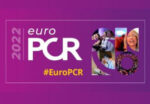Percutaneous treatment of coronary lesions affecting bifurcations has increased in recent decades. Coronary angioplasty (percutaneous coronary intervention, PCI) in these cases is associated with an increased rate of adverse events in patients with multivessel disease and left main coronary artery lesions. The SYNTAX score, which is a predictor of total mortality, is used to evaluate...
Results of Zotarolimus-Eluting Stents vs Biolimus-Eluting Polymer-Free Stents After 2 Years. Are They Safe in Patients at High Risk for Bleeding?
The proportion of patients treated with coronary angioplasty who are at a high risk for bleeding is increasing. In this population, extended dual antithrombotic therapy increases the risk of bleeding. The 1-year randomized Onyx one study has demonstrated the non-inferiority of zotarolimus-eluting stents (ZES) vs. biolimus-coated polymer-free stent BioFreedom (DCS). Patients received dual-antiplatelet therapy (DAPT)...
Using Biolimus-Coated Balloons for Treating Small-Vessel Disease Yields Promising Results
Drug-eluting balloons have demonstrated safety and effectiveness in the treatment of small-vessel coronary artery disease and in-stent restenosis. However, randomized studies were performed using paclitaxel. Several studies have shown that using biolimus, a semisynthetic analog of sirolimus, optimizes drug delivery in both stents and balloons. The aim of this randomized, multicenter study was to evaluate...
Should We Start Thinking Again About Bioresorbable Stents?
Coronary revascularization with drug-eluting stents (DES) is very frequent, especially in acute coronary syndromes, but these metallic stents are permanent foreign bodies that activate the entire inflammatory system. Using bioresorbable stents (BRS) emerged as an alternative to this challenge. Although the initial results of the ABSORB study were not as expected (probably due to a...
Revascularization Using DES in Infrapopliteal Disease: Meta-Analysis and Change of Paradigm?
Peripheral vascular disease (PVD) has been under-studied and under-recognized in comparison with ischemic heart disease and stroke, despite its well-known impact on quality of life and its associated morbidity and mortality. According to a systematic review, it was estimated that in 2015 about 238 million people globally had PVD. This number is on the rise....
DISCO RADIAL: Conventional or Distal Transradial Access?
Conventional transradial access (TRA) is already established as the access of choice for percutaneous coronary procedures, regardless of clinical presentation. This choice is based on multiple randomized studies and meta-analyses that have shown reduced bleeding at the puncture site, less vascular complications, and benefits on mortality (mainly in high-risk patients). The practicality of recovery allows...
EuroPCR 2022 | Should Revascularization Be Performed Before TAVR in Patients with Stable Coronary Disease?
Currently, the American and European guidelines recommend coronary angioplasty in patients with severe aortic stenosis with lesions >70% (Class IIa) who will undergo transcatheter aortic valve replacement (TAVR). However, the benefit of performing a revascularization in these patients is still uncertain. This prospective multicenter study included 2025 patients divided into two groups: complete revascularization (N = 1310)...
EuroPCR 2022 | The IMPROVED-CTO Trial
PCI success rate in chronic total occlusion (CTO), according to some registries, is below 80%. These failed revascularization procedures might lead to quality-of-life deterioration and shorter survival. This concern has driven the development of new techniques and technologies in an attempt to increase PCI success. Today, approximately 20% of CTOs are treated with a second...
Prophylactic Rivaroxaban Therapy for Left Ventricular Thrombus after ST-Segment Elevation Acute Coronary Syndrome
The incidence of left ventricular thrombosis (LVT) after anterior ST-segment elevation myocardial infarction (STEMI) ranges from 4% to 26%. This is associated with bad long-term evolution. In the past, triple-scheme therapy (vitamin K antagonist plus dual antiplatelet therapy) was recommended to prevent LVT, despite the lack of high-quality scientific evidence and an increase in the...
In Multivessel Disease, When Should Renal Impairment Be Considered?
Cardiovascular disease is one of the main causes of morbidity and mortality in patients with advanced chronic kidney disease (CKD), and vice-versa. Both diseases share risk factors, including, but not limited to, diabetes, high blood pressure, smoking, dyslipidemia, and old age. As kidney disease develops, its severity grade has been linked to more thrombotic events...








